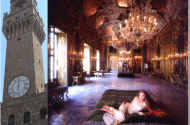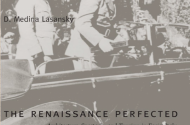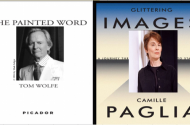“Italy – Modern Architectures in History” … Senza il Sud o Sicilia (Surprise!)
“Italy – Modern Architectures in History” … Senza il Sud o Sicilia (Surprise!)
(January 15, 2016)
Unlike most architectural history books, filled predominately with pictures and aesthetic narratives in terms of genre (Neo-Classical, Baroque, etc.) and noting how the pictured structures conform or deviate from the generic style; the “ 'Modern Architectures in History Series' explores [architectural forms] in their national context [not only] against a backdrop of aesthetic currents, [but also] economic developments, political trends and social movements” (e-book Location L 4). As such, the series may be characterized as architectural ‘social history’ or the ‘sociology of architecture’. Professor Diane Ghirardo’s book, one in that series, is particularly more social history than aesthetics – more social narrative text than pictures. This is to say; much more of her narrative has to do with the sociological and economic variables affecting architectural forms than the purely aesthetic characteristics of the structures. Thus for example, she writes: “This book engages Italian culture and architecture … by considering the production of buildings in dynamic relation to cultural, social and political developments.” (L 74) Further, she writes: “[Typical architectural] studies… don’t go beyond specific architectural trends or debates among the architectural elite. Here I will focus on more broadly conceived cultural and political issues and make no attempt to offer a standard architectural survey” (L 90). /// /// As with virtually all ‘Italian Studies’ in all academic disciplines, Prof. Ghirardo’s book, in her words: “focus [is] on … major cities [such as] Rome, Turin, Milan, Ferrara, Florence and Bologna …” (L88). Pointing out the obvious – no surprise here– no mention of cities south of Rome per ‘typical Italian studies’. Seemingly, Naples and Palermo are not “major cities.” /// /// However, Professor Ghirardo modestly breaks with this north of the Mezzogiorno academic tradition and at least mentions Naples, Palermo, Syracuse and Bari. Although, any references to southern architectural works are in the context of and parenthetical to the general northern discussion. For example, in a single extended paragraph on the “the prosperous middle classes interest in historic centers” (L 664), she mentions Palermo along with Florence, Turin, Milan and Rome. Specifically, Palermo’s “magnificent Post Office”: which, I would note, was designed by the Bolognese architect Angilol Mazzoni. /// /// Also, mention (no more) is made of the Ribaudo kiosk (hardly monumental architecture) and the Kursall Biondi theatre. Albeit both designed by Palermitan born and educated Ernesto Basile; nevertheless, he spent most of his career at the University of Rome and his Palermo designs are considered examples of the “Vienna Secession style”. Basile, rejecting his indigenous Mediterranean architecture, embracing the Viennese style consistent with northern Italy’s historic Germanic tradition (e.g. Milan’s Gothic Cathedral), may exemplify Gramsci’s idea of a dominated culture’s indigenous intellectual facilitating the hegemonic dominator. /// /// In short, Professor Ghirardo ‘throws a bone” (as it were) to the South of Rome but, frankly there was “not much meat on it” (so to speak); virtually the whole of the book’s 335 page narrative is about Rome and the North. /// /// Thus, the book constitutes more evidence to corroborate much other evidence presented on this blog of the northern cultural hegemony (a la Gramsci) over the South and Sicily. /// /// Nevertheless, this book is important reading for students of the South and Sicily, for it describes and explains the hegemonic cultural forces of the North, and by implication the student comes to understand the nature of the South of Rome political, economic and cultural domination; and how, in the English language, the contemporary word ‘Italy’ has come to mean north of the former ‘Kingdom of the Two Sicilies’.
The Structure of the Book
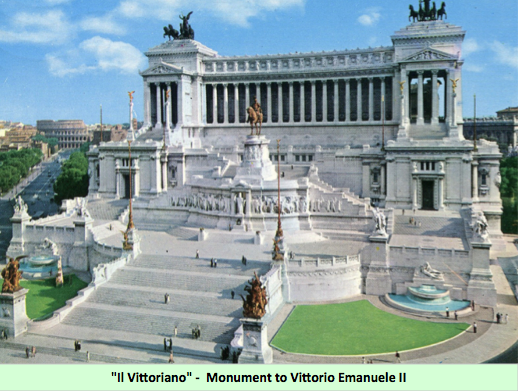
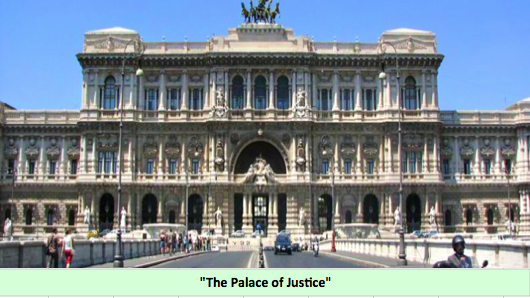
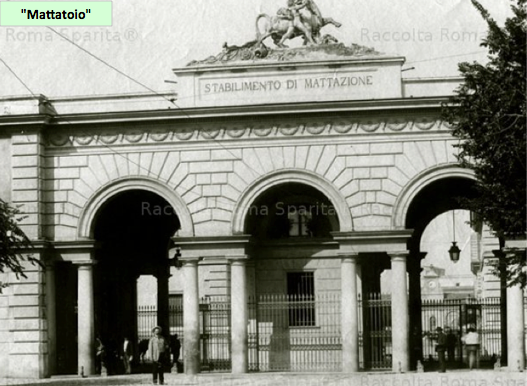
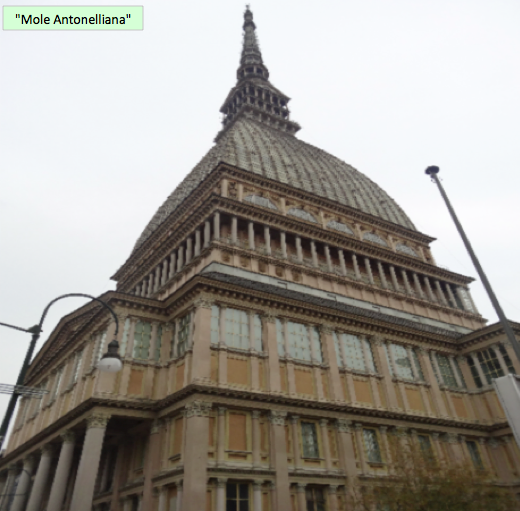
|
Pictured Location
|
# Pictures per Location
|
Total
Rome + North |
Total
Sicily + Mezzo. |
|
Rome
|
36
|
|
|
|
North of Rome
|
97
|
133
|
|
|
Sicily
|
12
|
|
|
|
Mezzogiorno
|
18
|
|
30
|
|
Total
|
163
|
|
|
|
Location
|
N (north) S (south)
Sicily
|
E- book Location
|
|
Rome
|
.
|
168
|
|
Rome
|
.
|
211
|
|
Rome
|
.
|
211
|
|
Turin
|
N
|
219
|
|
Turin
|
N
|
383
|
|
Rome
|
.
|
400
|
|
Rome
|
.
|
417
|
|
Rome
|
.
|
417
|
|
Ferrara
|
N
|
424
|
|
Milan
|
N
|
450
|
|
Milan
|
N
|
451
|
|
Milan
|
N
|
456
|
|
Milan
|
N
|
468
|
|
Ferrara
|
N
|
484
|
|
Rome
|
.
|
484
|
|
Rome
|
.
|
530
|
|
Messina
|
Sicily
|
545
|
|
Milan
|
N
|
545
|
|
Messina
|
Sicily
|
548
|
|
Milan
|
N
|
583
|
|
Bologna
|
N
|
591
|
|
Turin
|
N
|
633
|
|
Formia
|
S
|
657
|
|
Rome
|
.
|
689
|
|
Palermo
|
Sicily
|
690
|
|
Florence
|
N
|
719
|
|
Naples
|
S
|
734
|
|
Bologna
|
N
|
899
|
|
Rome
|
.
|
899
|
|
Rome
|
.
|
903
|
|
Trieste
|
N
|
915
|
|
Milan
|
N
|
923
|
|
Rome
|
.
|
926
|
|
Milan
|
N
|
971
|
|
Cuneo
|
N
|
987
|
|
Venice
|
N
|
1017
|
|
Como
|
N
|
1122
|
|
Como
|
N
|
1139
|
|
Rome
|
.
|
1139
|
|
Rome
|
.
|
1142
|
|
Rome
|
.
|
1142
|
|
Rome
|
.
|
1146
|
|
Trento
|
N
|
1179
|
|
Ferrara
|
N
|
1179
|
|
Ferrara
|
N
|
1207
|
|
Sabaudia
|
S
|
1215
|
|
Palermo
|
Sicily
|
1215
|
|
Palermo
|
Sicily
|
1218
|
|
Rovigo
|
N
|
1235
|
|
Trento
|
N
|
1250
|
|
Incisa Caldarno
|
N
|
1250
|
|
Rome
|
.
|
1371
|
|
Rome
|
.
|
1371
|
|
Rome
|
.
|
1382
|
|
Bolzano
|
N
|
1396
|
|
Gorizia
|
N
|
1410
|
|
Trento
|
N
|
1455
|
|
Rome
|
.
|
1469
|
|
Bologna
|
N
|
1508
|
|
Calambrone
|
N
|
1508
|
|
San Remo
|
N
|
1537
|
|
Como
|
N
|
1551
|
|
Capri
|
S
|
1551
|
|
Milan
|
N
|
1569
|
|
Milan
|
N
|
1579
|
|
Battipaglia
|
S
|
1579
|
|
Pontinia
|
S
|
1660
|
|
Littoria
|
S
|
1677
|
|
Rome
|
.
|
1735
|
|
Rome
|
.
|
1775
|
|
Rome
|
.
|
1780
|
|
Rome
|
.
|
1793
|
|
Bianchi
|
S
|
1896
|
|
Rome
|
.
|
1904
|
|
San Bartolomeo
|
S
|
1949
|
|
Tuscolano
|
S
|
2145
|
|
Matera
|
S
|
2182
|
|
Rome
|
.
|
2201
|
|
Rome
|
.
|
2201
|
|
Rome
|
.
|
2206
|
|
Genoa
|
N
|
2244
|
|
Genoa
|
N
|
2258
|
|
Ivrea
|
N
|
2306
|
|
Naples
|
S
|
2351
|
|
Naples
|
S
|
2352
|
|
Milan
|
N
|
2373
|
|
Bologna
|
N
|
2387
|
|
Venice
|
N
|
2420
|
|
Palermo
|
Sicily
|
2420
|
|
Milan
|
N
|
2492
|
|
Venice
|
N
|
2492
|
|
Pino Rorinese
|
N
|
2495
|
|
Pino Rorinese
|
N
|
2496
|
|
Sardinia
|
S
|
2498
|
|
Turin
|
N
|
2537
|
|
Turin
|
N
|
2549
|
|
Milan
|
N
|
2583
|
|
Milan
|
N
|
2592
|
|
Turin
|
N
|
2634
|
|
Turin
|
N
|
2650
|
|
Turin
|
N
|
2663
|
|
Turin
|
N
|
2676
|
|
Verona
|
N
|
2701
|
|
Ferrara
|
N
|
2794
|
|
Ferrara
|
N
|
2795
|
|
Rome
|
.
|
2879
|
|
Venice
|
N
|
3036
|
|
Venice
|
N
|
3053
|
|
Venice
|
N
|
3069
|
|
Venice
|
N
|
3081
|
|
Florence
|
N
|
3097
|
|
Rome
|
N
|
3116
|
|
Rome
|
N
|
3117
|
|
Agrigento
|
Sicily
|
3175
|
|
Rome
|
.
|
3258
|
|
Milan
|
N
|
3310
|
|
Gibellina
|
Sicily
|
3344
|
|
Gibellina
|
Sicily
|
3354
|
|
Agrigento
|
Sicily
|
3357
|
|
Rome
|
.
|
3452
|
|
Rome
|
.
|
3491
|
|
Sarno
|
S
|
3577
|
|
Milan
|
N
|
3593
|
|
Ferrara
|
N
|
3624
|
|
Naples
|
S
|
3659
|
|
Milan
|
N
|
3965
|
|
Milan
|
N
|
4003
|
|
Trento
|
N
|
4017
|
|
Trento
|
N
|
4017
|
|
Riccione
|
N
|
4029
|
|
Aloso
|
N
|
4053
|
|
Modena
|
N
|
4055
|
|
Modena
|
N
|
4056
|
|
Orvieto
|
N
|
4086
|
|
Orvieto
|
N
|
4087
|
|
Alonte
|
N
|
4096
|
|
Borgoricco
|
N
|
4156
|
|
San Giovanni Rotondo
|
S
|
4183
|
|
San Giovanni Rotondo
|
S
|
4183
|
|
Milan
|
N
|
4186
|
|
Nola
|
N
|
4186
|
|
Turin
|
N
|
4239
|
|
Turin
|
N
|
4267
|
|
Turin
|
N
|
4267
|
|
Venice
|
N
|
4306
|
|
Venice
|
N
|
4320
|
|
Turin
|
N
|
4351
|
|
Rome
|
.
|
4386
|
|
Rome
|
.
|
4386
|
|
Rome
|
.
|
4427
|
|
Rome
|
.
|
4427
|
|
Cesena
|
N
|
4442
|
|
Venice
|
N
|
4456
|
|
Bologna
|
N
|
4470
|
|
Bologna
|
N
|
4472
|
|
Appiignano
|
N
|
4472
|
|
Turin
|
N
|
4497
|
|
Turin
|
N
|
4497
|
|
Como
|
N
|
4501
|
|
Reggio Emilia
|
N
|
4501
|
|
Reggio Emilia
|
N
|
4501
|
|
Erice
|
Sicily
|
4532
|
|
Erice
|
Sicily
|
4546
|
This work may not be reproduced, in whole or in part, without prior written permission.
Questo lavoro non può essere riprodotto, in tutto o in parte, senza permesso scritto.



